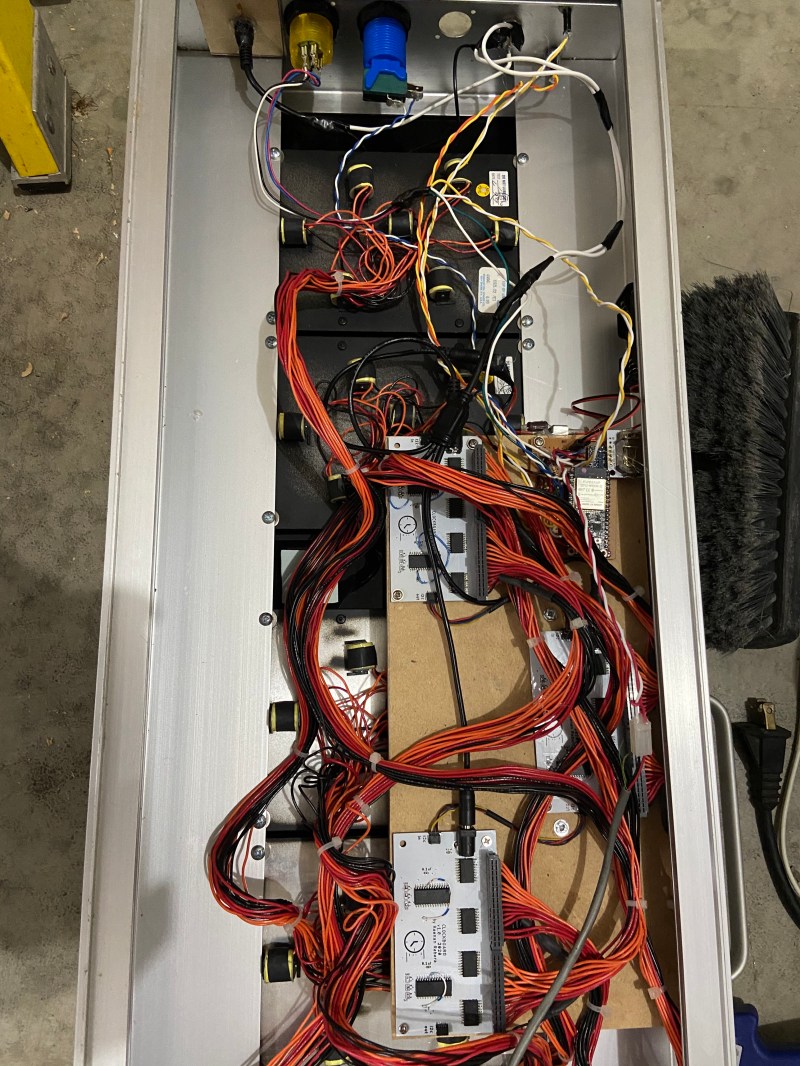[Keenan Rebera] recently found himself with an old racing clock (a chronoix cc3000) left behind by a roommate. How the roommate obtained such a clock seems murky at best, but undeterred [Keenan] set to work bringing the clock to life with Bluetooth functionality. The mechanical nature of the digits provided a satisfying auditory click, making it a good candidate for some upgrading. The new brain transplant is the venerable ESP32 with an RTC for good measure. He created a custom PCB with QWIC connectors to daisy chain together the driver boards together. Each PCB has four TBD62083 for driving the digits, two MCP expanders to increase the address space. This allows the ESP32 to address all the various segments over I2C. By soldering different pads together, he can change the address of each MCP, giving a maximum of 16 digits (9 possible MCP’s each driving 2 digits).
A handsomely designed app accompanies the clock, making updating the RTC and setting the timezone a breeze. Currently, it is displaying a count down to the time when 2020 is officially over. While 2020 will certainly go down in the books as a tumultuous year, it was a great year for DIY clocks at Hackaday. Just in the past few weeks, we’ve seen big LED workshop clocks, esoteric domino clocks, and beautiful clocks that double as works of art. Come 2021, we’re quite confident that [Keenan] will still have a gorgeous clock on his wall ticking and clicking away.
Thanks [Keenan] for sending this in!
















The connector standard, coined by Sparkfun, is called QWIIC, not QWIC.
its a chronomix cc3000, not “chronoix”
Used to use those for displaying times at autocross events. Depending on the version of the display, some have a pretty standard serial input that’s well documented and easy to drive. Others were more limited functionality I think. The flipper segments sometimes go bad.
I wasn’t able to find a serial interface on it, and the replacement components from Chronomix alone to get it running again were way too expensive for a poor college guy like me. I haven’t had any issues with the flippers so far, but if any of them start misbehaving hopefully I can configure the coil activation time to be a little longer
It’s an honor to be featured! Happy Holidays, all. And happy hacking in 2021!
Any chance in the world you can confirm the power supply specs and XLR pinout for the CC3000?
I’m about to restore one for our autocross club and I want to make sure I’m giving it the right beans. :)